Time to read: 7 min
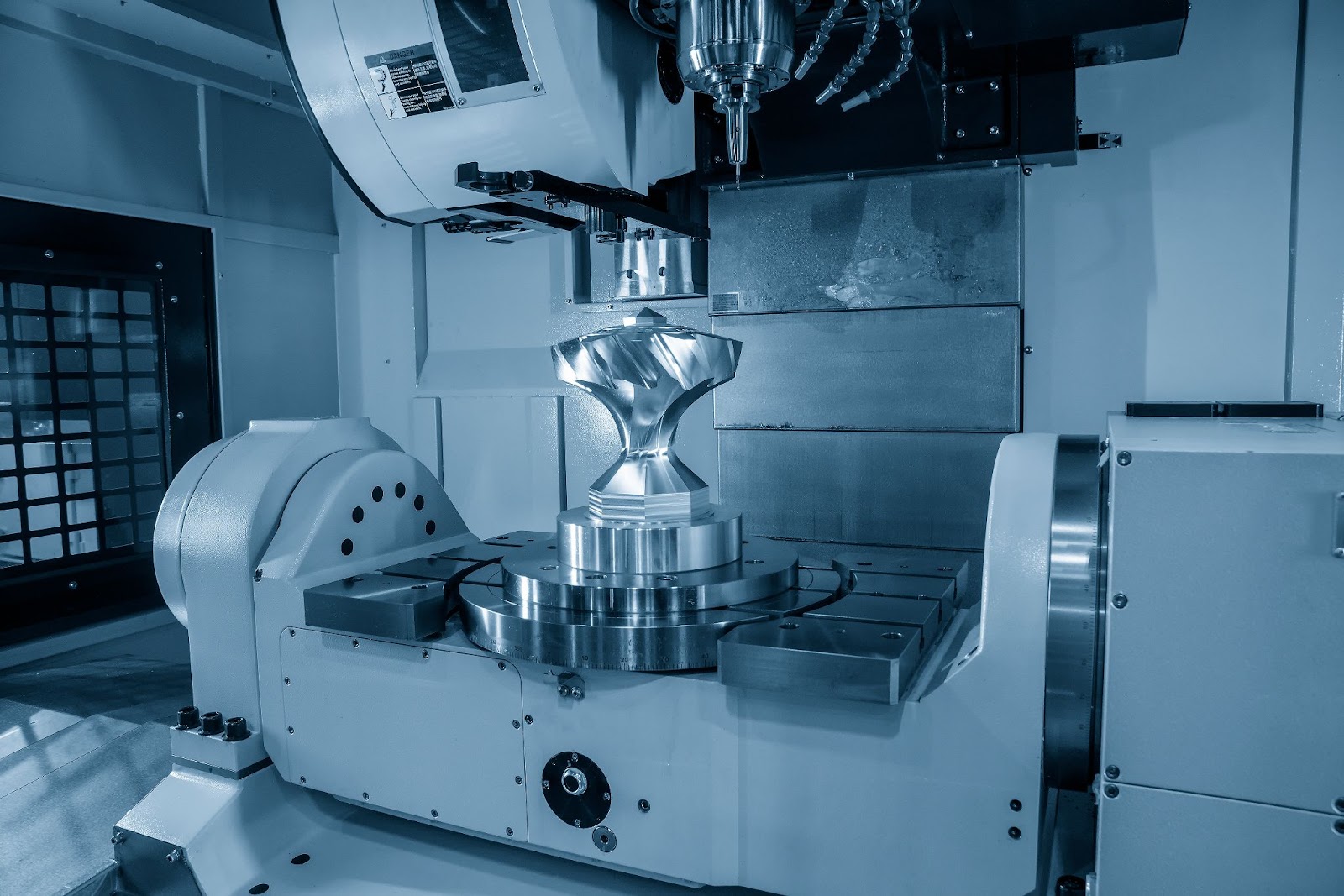
With modern, incredible advances in computer-aided design tools available to more people these days, there is no limit to what can be designed. As products get more complicated, machining them can get complicated also. Bringing a design to life can require machinery with incredible capabilities to make advanced designs a reality.
CNC machining allows for the creation of high-quality, intricate parts with limited human intervention. As the part geometries become more complex, machines capable of performing cutting operations on more axes are required in order to machine the part correctly and with high quality. Knowing the difference between different CNC machines can help you make the proper selection when determining the required equipment to process your designs. 5-axis CNC machining opens up a world of possibilities for manufacturing even the most complex parts.
The Basics of CNC Machining
CNC stands for Computer Numerical Control and is a machining process that uses pre-programmed computer software to control the movement of tools and machinery. When applied to milling or turning operations, CNC machines allow for complex, high-speed, and high-precision machining operations to be accomplished with little manual operator input.
Just like in traditional milling and turning operations, a high-speed rotating bit held in a tool head is used to remove material from a workpiece one chip at a time. Carefully removing material pass by pass results in high-quality finished parts. With computers controlling the tool speed and placement, human error is virtually eliminated. Parts produced with CNC machines tend to have more repeatable tolerances and finished part quality.
Pro-Tip: Check out our Ultimate Guide to CNC Machining to learn more about CNC machining!
Milling vs. Turning
CNC systems can apply to a wide range of machinery. CNC mills and CNC turning machines tend to be the most popular types of CNC equipment but CNC routers, CNC gear hobbers, CNC wire EDM cutters, and CNC grinders are available also. Most parts can be machined using milling, turning, or a combination of the two.
When milling a part, the workpiece is locked into place and a rotating bit is used to remove material from the part with each pass. While most machines can move the bit in three directions (the X, Y, and Z-axes) some machines are capable of more complicated maneuvers.
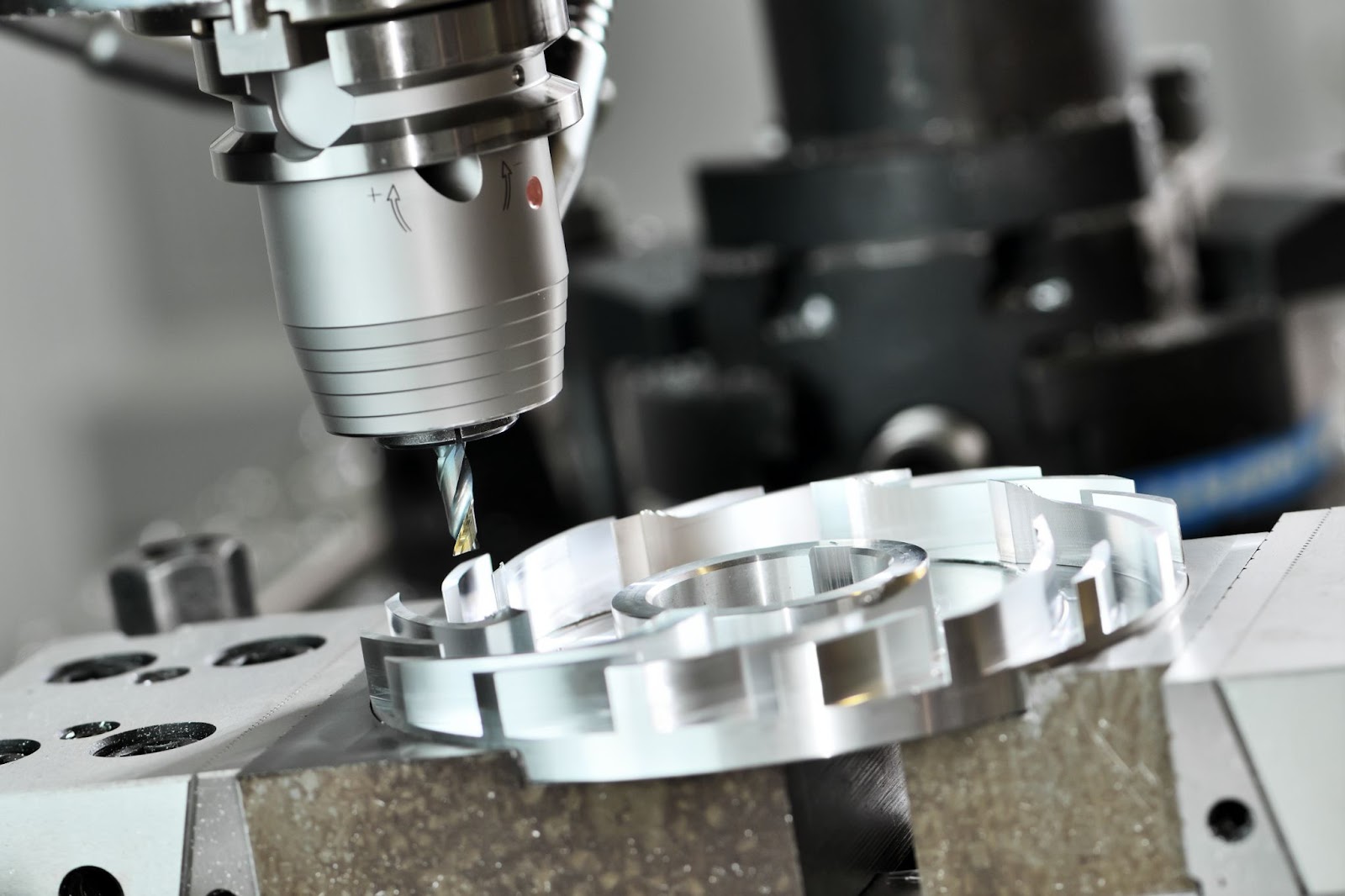
When using a CNC turning machine to turn a part, the workpiece is locked into a set of jaws to hold it tightly. The machine then begins to spin the workpiece at a high speed. A cutting bit is then used to slowly remove material with each pass, symmetrically shaping the object into the final shape.
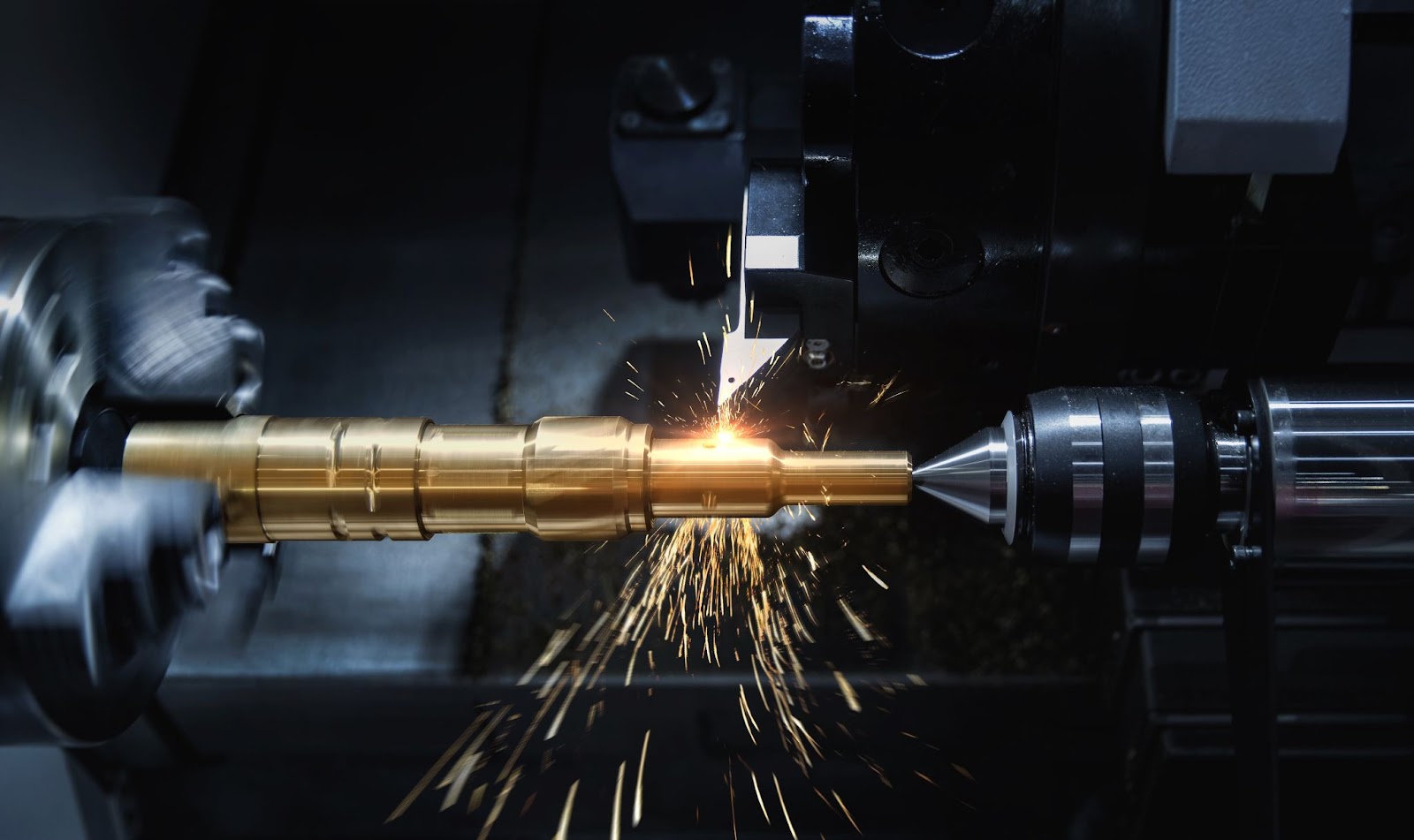
What Materials Can be Used with CNC Machining?
These machines can process a wide range of material including:
What are Tolerances for CNC Machining?
Having computers controlling the cutting tools often allows for tighter tolerances. For linear dimensions, these tolerances are usually within +/- 0.01mm or 0.0003 inch. Hole diameters are typically within +/- 0.008mm or 0.0003 inch and shaft diameter tolerances fall within +/- 0.004 mm or 0.00016 inch. Check out Fictiv’s CNC Machining page to learn more about materials, tolerances and finishing options available for CNC machining.
How Many Axes Do You Need?
When discussing CNC machining, the topic of axes comes up quickly. In the simplest terms, the axes associated with a CNC machine refers to the directions that the tool head can move. The simplest and most common machines are 3-axis, but sometimes 4 or 5-axis machines are required to get the job done.
3-axis Machines
3-axis machines are the most common type of CNC machine and are the simplest to build and program. 3-axis machines can move the cutting bit in the X, Y, and Z axes. Each additional axis gives the cutting bit a further degree of freedom.
For many parts, 3-axis machines are able to machine them just fine. These machines are great for most machining and for simple parts. Complex geometries require manual repositioning between cutting operations and may require custom jigs or other fixtures to accomplish the machining.
4-axis Machines
With an additional axis, these machines are able to rotate the tool head around the workpiece being machined. 4-axis machines can shape the part in the X, Y, Z, and A axes. Because the workpiece can rotate, more complex geometries are possible but the machine still has limitations.
5-axis Machines
Capable of cutting in the X, Y, Z, A, and B axes, 5-axis machines can produce parts with incredible geometries and complexity. Because the tool head can move in all three directions and can rotate around the part on two different axes, many fewer setups are required when using a 5-axis machine. The tool head or the workpiece is able to reposition automatically, removing the need for complex fixtures. 5-axis machines are the go-to choice for complex parts.
Types of 5-axis Machining
While all 5-axis machines are capable of moving in or around 5 axes, how that movement is accomplished can vary. More complex machinery can often create more complicated parts but can also be harder to program because of all of this freedom.
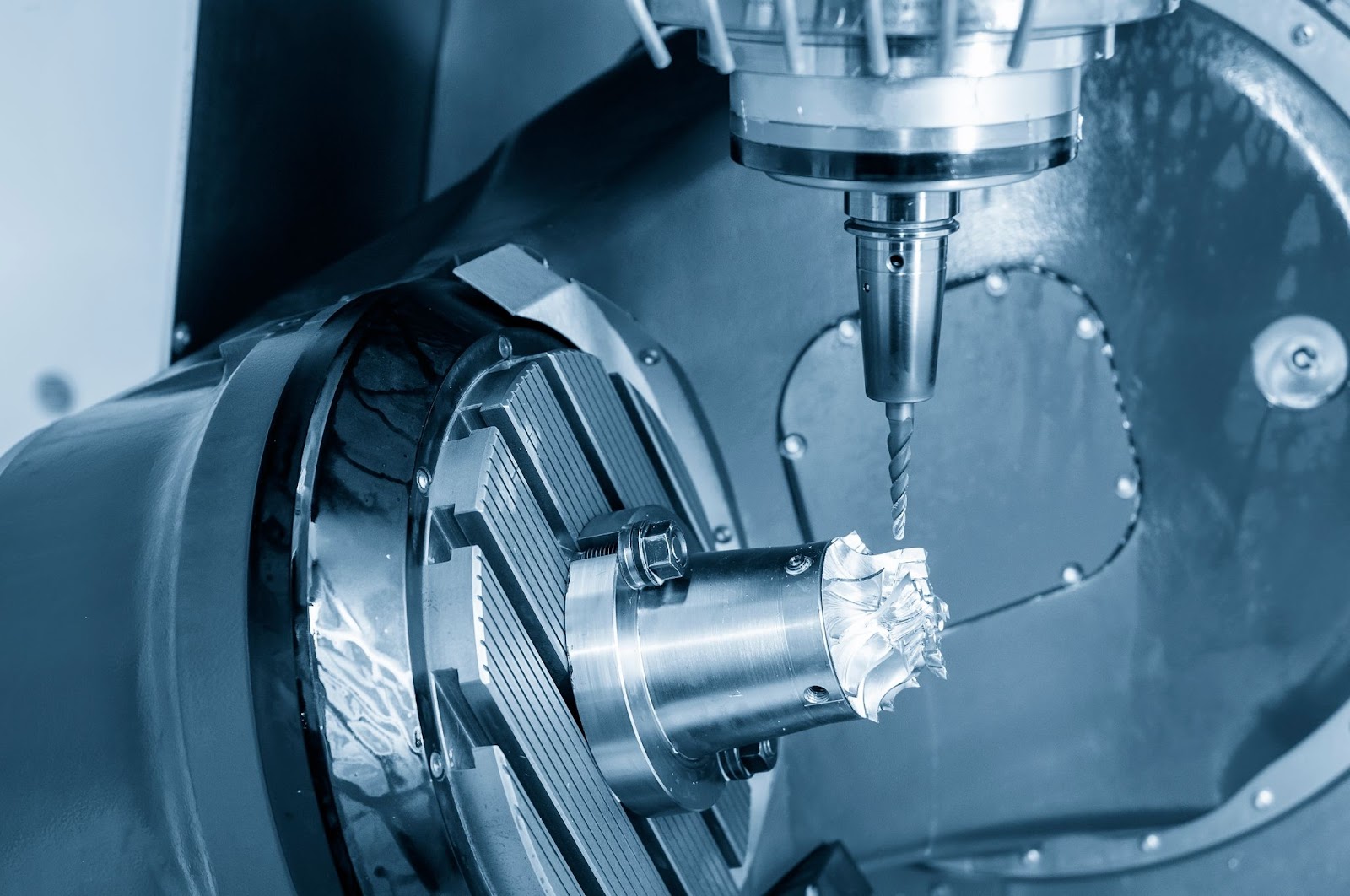
Indexed 5-axis
This form of 5-axis machining is the simplest method but is still very effective. With an indexed 5-axis machine, the tool head only moves in three axes but the workpiece is rotated along two axes in between cutting operations. The cutting bit does not maintain continuous contact with the workpiece. Because rotation only occurs when the tool head is not actively cutting, the required tool paths are much simpler making programming easier.
Continuous 5-axis
These 5-axis CNC machines move along or around all 5-axes while the cutting bit is engaged with the workpiece. While the toolpaths are more complicated, both speed and surface finish are improved with continuous 5-axis machines. Watching these machines work is impressive as they carefully sculpt the workpiece into a finished part.
5-axis Mill-Turning CNC Centers
While milling and turning operations are typically handled by different machines, mill-turning CNC centers combine these operations. The extremely high accuracy, high yields, and fast machining speeds of these turning centers make them incredibly hard to beat. Programming these machines can be complex and the machines themselves are not cheap. For the most complicated part geometries, mill-turning CNC centers are hard to beat.
When to Choose 5-axis Machines
When deciding what CNC machine should be used to machine a part, choose the machine with the least number of axes that can reasonably machine the part. Simple parts work just fine on 3-axis machines and the per part cost is lower on those machines. 3-axis machines are also much more widely available. The cost goes up with 5-axis so use 3-axis when it can accomplish the machining you need. Keep it simple where you can.
Deeper parts or more complex geometries benefit from 5-axis machines and can actually be cheaper to run because of the reduced number of setups. While the 5-axis machines are more capable, the difficulty of programming them must be taken into account.
CAD and CAM programs are needed to program 5-axis machines efficiently with their more complicated toolpaths. Collision avoidance is critical with so much freedom of motion. Maintaining proper tool orientation to the workpiece and constant chip load increases tool life and surface quality but requires complicated toolpaths. While the CNC part of these machines means operators do not have to give the machines much attention, 5-axis machines require operators to be very knowledgeable so they can fix any issues that do come up.
Typical Applications for 5-axis Machining
The availability of 5-axis machining and lower costs have widened the industries that use the technology. More widespread usage of CAD software also means more complex parts are being designed, tailored for specific applications. Aerospace, medical, and energy generation related equipment all regularly use 5-axis CNC machining to manufacture parts.
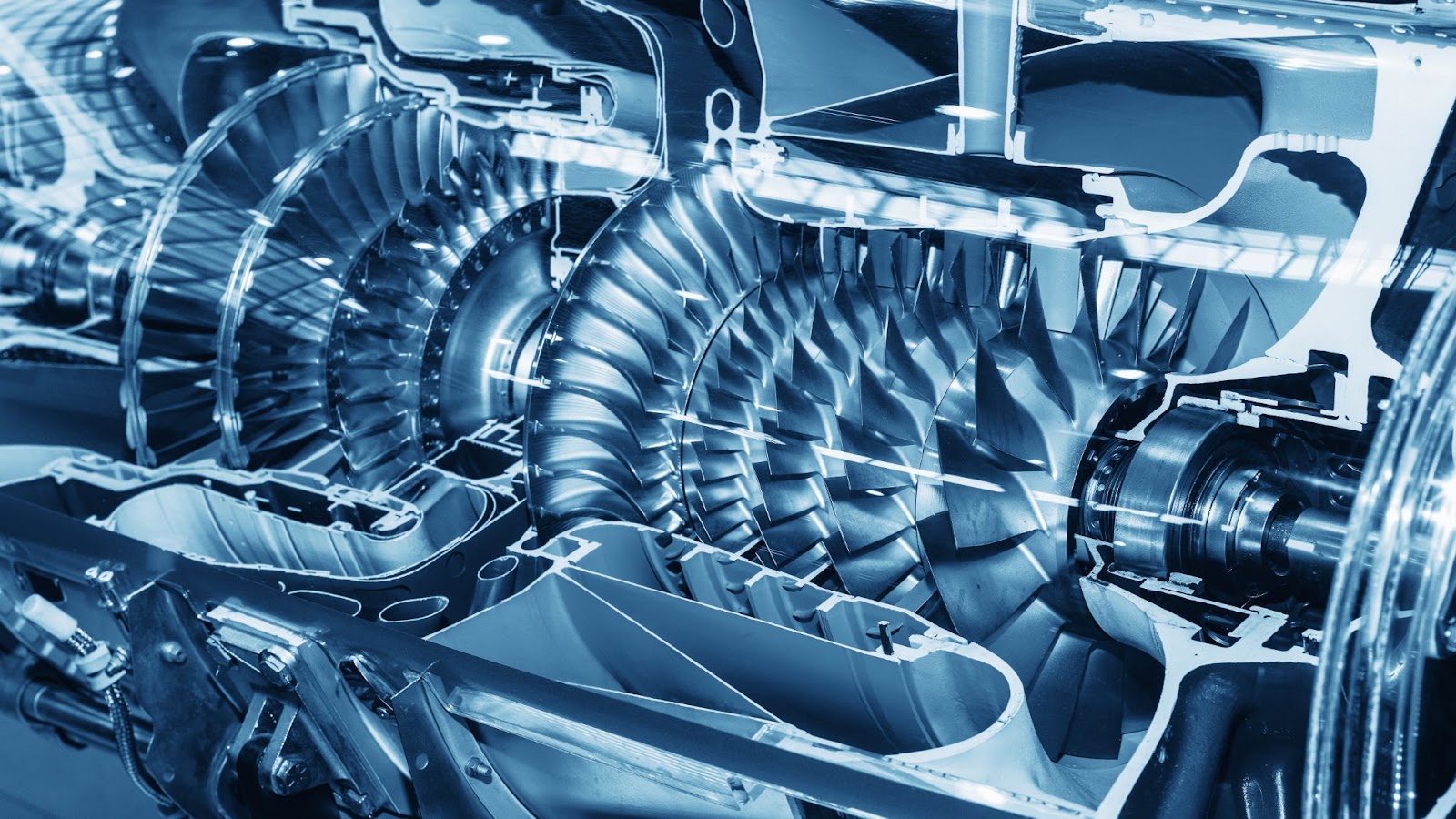
Aerospace
With smooth continuous surfaces and shapes with contoured edges, 5-axis machines are often the best way to achieve the needed surface finishes for aerospace parts. Complex geometries can be designed to optimize for performance and then machined on a 5-axis machine. These complex geometries can often be completed in a single pass.
Medical
Due to the rigorous healthcare standards medical devices are held to, they often require the tolerances 5-axis machining can offer. Small intricate details are easier to machine in a continuous 5-axis operation. Exotic materials are often easier to machine with the toolpaths a 5-axis machine can offer, keeping the tool head in the proper position throughout the cutting operation.
Energy Generation
Tight tolerances, complex geometries, and high-performance make 5-axis machining a common manufacturing process for energy generation equipment. Whether for high-temperature compressor and turbine blades or for power transmission shafts in wind turbines, energy generation equipment takes advantage of everything 5-axis machining can offer.
5-axis Machining: the Best Choice for Complex Parts
CNC machining brings creations to life with the help of computers to control the cutting operation. More advanced part geometries require more advanced machines, capable of moving on or around more axes. For the most intricate designs or those requiring the tightest tolerances, 5-axis machines are hard to beat. 5-axis machines deliver exceptional surface quality, dimensional stability, and the widest range of machining possibilities. With 5-axis CNC machines, even the most designs can be brought to life.
Sourcing Simplified – Start Your Next Project With Fictiv
For all your CNC machining service and finishing needs, Fictiv has you covered. We’re experts at producing custom CNC machined tight tolerance parts, in a variety of materials, and we simplify custom part sourcing with intelligent, streamlined, automated workflows. Fictiv is your operating system for custom manufacturing that makes part procurement faster, easier, and more efficient.
Create an account and upload your part to see what our instant quote process, design for manufacturability feedback, and intelligent platform can do for you.










